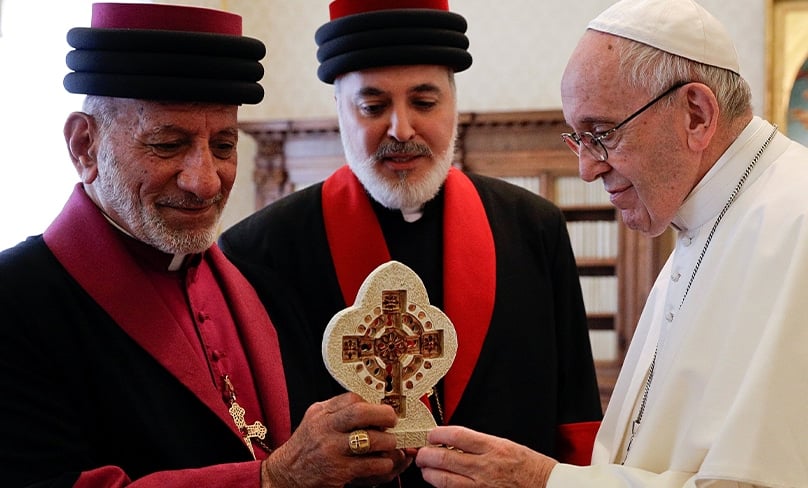
Dear Fr Flader, I recently met someone who said he was of the Assyrian Church of the East. I had never heard of this church. Is it part of the Catholic Church? What can you tell me about it?
This church, which also calls itself officially the Holy Apostolic Catholic Assyrian Church of the East, is not part of the Catholic Church. Nor is it one of the Eastern or Oriental Orthodox churches, having separated from the church founded by Christ much earlier than they. And it is not in communion with these Orthodox Churches.
As regards its origin, it is probable that the church began with the missionary activity of Sts Thomas and Bartholomew, as well as Addai of Edessa, in the first century. The church developed first in what was then the Parthian empire, to the East of the Roman Empire.
The exact location of the church’s first congregations cannot be established from the historical records, but it is thought that it was in the region of northern Mesopotamia, in present-day Iraq.
The Assyrian people of upper Mesopotamia have always been an important part of the church of the East, and today they represent the majority of the faithful. The largest numbers of adherents are in Iraq, Iran, Syria and Lebanon, but there are also congregations in Europe, North America, Australia and India.
There are some 400,000 faithful in all. The liturgical language of the church is Syriac, or Aramaic, the language of ancient Mesopotamia.
How did this church become separated from the church of Rome? It accepted the teachings of the Councils of Nicaea in 325 and Constantinople in 381, which gave us the articles of the Nicene-Constantinopolitan Creed, which we say in Mass, but they did not accept those of Ephesus in 431 or later councils.
The Council of Ephesus taught that in Christ there is one divine Person, thereby rejecting the errors of Nestorius, who maintained that in Christ there are two persons, one human and one divine, and therefore Our Lady was the mother of the human person only and not the mother of God.
It is sometimes alleged that the Assyrian Church of the East is therefore Nestorian, but it denies this. In any case, the church has remained separated from Rome ever since. Nonetheless, a part of the Assyrian Church was reunited with Rome in 1830, becoming the Chaldean Catholic rite.
Their theology of the sacraments is that of the early church. The sacrament of baptism is primary, and confirmation and the Eucharist are administered along with it. The central feature of worship is the Eucharist, known as the “Holy Offering.” They celebrate the Divine Liturgy of Saints Addai and Mari, of the East Syriac Rite.
The faithful receive the Body and Blood of Christ under the species of both bread and wine, regarding them as the real presence of Christ. A priest ordained by a bishop with apostolic succession is required for the consecration.
The doctrinal teaching of the church is based on the Nicene Creed, with the mystery of the Holy Trinity and the mystery of the Incarnation central to its teaching. The church believes that the Only-begotten eternal Son of God became incarnate, begotten of a mother without an earthly father, in a body of flesh, with a rational, intelligent, and immortal soul. The humanity of Christ was assumed by the divine person of God the Word, who was the personal subject of the divine and human natures.
Therefore, because the divinity and humanity are united in the one divine person of the Son of God, the church rejects any suggestion that Christ is an “ordinary man” whom God the Word inhabited.
The Assyrian Church further rejects the idea that there are two Persons in Christ, as taught by Nestorius. Christ redeemed mankind by his passion, death and resurrection, and he secured the hope of resurrection and eternal life for all who put their faith in him.
In 1994 the Assyrian and Catholic Churches signed a common Christological declaration, recognising the legitimacy of each other’s titles for Our Lady.
And in November 2022, Pope Francis met with Mar Awa III, the head of the Assyrian Church of the East, urging members of the two churches “to pray and work diligently in preparation for the much awaited day” when full unity is achieved.
